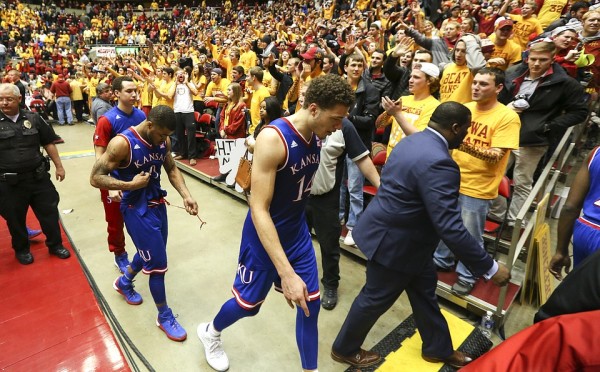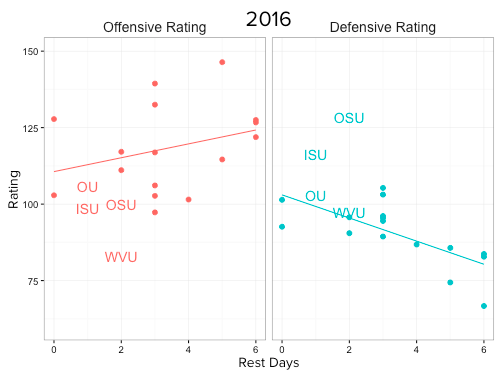What Happened To Kansas’ Depth?
Posted by Chris Stone on January 27th, 2016When Kansas was regularly discussed among a handful of national title contenders early on in the season, one aspect of the Jayhawks’ roster stuck out more than anything else: its depth. Even head coach Bill Self acknowledged the fact that his talent pool contained 10 or 11 potential rotation players. Given that wealth of talent, a reasonable roster development plan would have looked something like this: Freshman Cheick Diallo receives clearance from the NCAA and becomes the Jayhawks’ motor, a rim protector and rebounding machine that would fill Kansas’s biggest hole in the front court. Fellow freshman Carlton Bragg grows into an offensive threat that could help spread the floor as a sort of Diet Perry Ellis off the bench. Together, Bragg and Diallo would displace many of the minutes devoted to the Jayhawks’ other solid, but unexciting front line options – guys like Hunter Mickelson, Jamari Traylor, and Landen Lucas. Meanwhile, guard Sviatoslav Mykhailiuk would begin to fulfill some of his potential as a possible NBA lottery pick by turning into a dangerous scoring option off the Kansas bench.

Kansas suffered its third straight road loss on Monday night. (Nick Krug/KU Sports)
Things haven’t exactly gone according to plan for Self and the Jayhawks. Last Friday, Self met with his four co-captains to help sort out the team’s rotation going forward. The results have been hard to miss. Over the Jayhawks’ past two games, Self has shrunk his rotation down to basically seven players–Ellis, Lucas, and Traylor in the front court along with Frank Mason, Devonte Graham, Wayne Selden, and Brannen Greene. The trio of youngsters expected to help Kansas reach its peak have combined to play just 16 of the 400 available minutes in those two contests. Bragg is the only one of the three to see the floor in both games.
The four players Self met with–Mason, Graham, Selden, and Ellis–have played the majority of available minutes for the Jayhawks during conference play. Selden, at 78.8 percent, has seen the most rest of the quartet, Mason the least (he’s played 85.4 percent of available minutes). No other player on the Kansas roster has averaged even 40 percent of available minutes during league play. The reliance on such a small core of players, when combined with the nature of the Big 12 schedule, may be having a noticeable effect on the Jayhawks’ performance.
The schedule hasn’t helped Kansas, either, as the team has consistently played road games on short amounts of rest during conference play. The Jayhawks have played four weekday games following a Saturday contest during Big 12 play. Included in those results was the memorable home win over Oklahoma, but also three straight road losses at West Virginia, Oklahoma State, and Iowa State. There has been a recognizable decline in the Jayhawks’ performance, both offensively and defensively, on shorter rest this season:

Kansas has struggled in its short rest games during Big 12 play. (Data credit: Mike Kearney, @kearneymw)
The demanding travel of the Big 12 schedule, particularly for a Kansas team often featured on Big Monday, combined with a shortened rotation has likely contributed to a fatigued Jayhawks squad that is losing its grasp on a 12th straight regular season conference championship. The effect of fatigue may not have been sufficiently explored in college basketball, but it has been well studied in the NBA. At the next level, shorter rest periods and travel contribute to fewer assists, tougher shooting nights, and worse defense. Little has been done to examine how travel and short rest periods impact the college game, but this small set of data suggests that when travel is coupled with a shortened rotation, the effects can be troubling. In this case, the end result may be a new Big 12 champion.









































